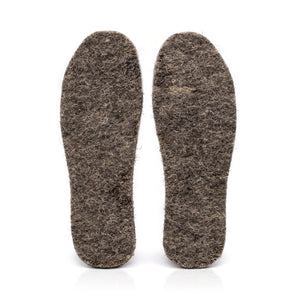During dry spells of weather, it can be tricky to keep the garden watered, and we need to use water as efficiently as possible. Our ollas are incredibly popular for simple and effective irrigation.
How do you pronounce “olla”?
This is a Spanish word, so the “ll” is silent; you pronounce it “ohh-yah” which sounds like you are understanding something in a posh tone of voice. However, we eschew all pretensions of grandeur here at Chimney Sheep and have Anglicised it to pronounce it as it’s spelt. “Ollah”. If we’re talking to a Spanish person, they think we are saying hello to them a lot. Apologies to all Spanish speaking people that we confuse and irritate.
OK, pronunciation out of the way, What is an Olla?
The literal translation is pot. Our ollas are earthenware pots that are porous. If you fill them with water it slowly seeps out.
So, what’s so special about ollas?
Their simplicity!
And their pleasing shape.
You bury an olla so that just the neck is showing. Then you fill it up with water. This slowly seeps into the ground, delivering water to plants’ roots. If the ground is wet, the water stays in the olla, and if the soil is dry, the water is drawn out by osmosis. Research has shown that ollas can conserve up to 70% more water than top-watering, and is more efficient than a drip system. When you water plants on the surface, you waste a lot of water from run-off and evaporation. You are also watering weeds and everything else that’s wanting hydration. By filling the ollas every couple of days, and you reduce the amount of time spent watering.

What are the other benefits of using ollas for irrigation?
Ollas encourage deeper root growth. If you water on the surface, this encourages roots upwards. Deeper roots enable plants to tap into moisture and nutrients deeper in the soil, and it means they can keep cooler, and are not so vulnerable to the temperature and humidity fluctuations in shallow soil.
You can add liquid fertiliser to deliver additional nutrients directly to the roots.
How wide apart should you bury the ollas?
This depends on what the capacity of the olla is, the condition of the soil (sandy vs clay) and what is being grown. As a general rule, the 1litre – 3 litre ones should go about 75cm - 1m apart, and the 4 litre ones can be spaced about 1.5m apart.

Can you use ollas in raised beds?
Yes.
Can you use ollas indoors?
Yes
Can you use ollas in hanging baskets and planters?
For smaller containers, it’s recommended that you use the small 300ml mini-ollas, or our self-watering spikes. These are brilliant for houseplants and hanging baskets, especially if you’re going away for a few days.

Do ollas require any maintenance?
Remember to leave the lid on because beetles and things could fall in and drown. If you are in an area that is prone to frost, it’s best to dig them up in the autumn. This is actually quite interesting because you can see how the roots have travelled towards the ollas, and even wrapped themselves around them in some cases! If the pores become clogged, you can scrub them clean or soak in vinegar.
The ollas are too nice to bury!
Buy a spare, then you can have a pleasingly curvaceous one to have as an ornament.




